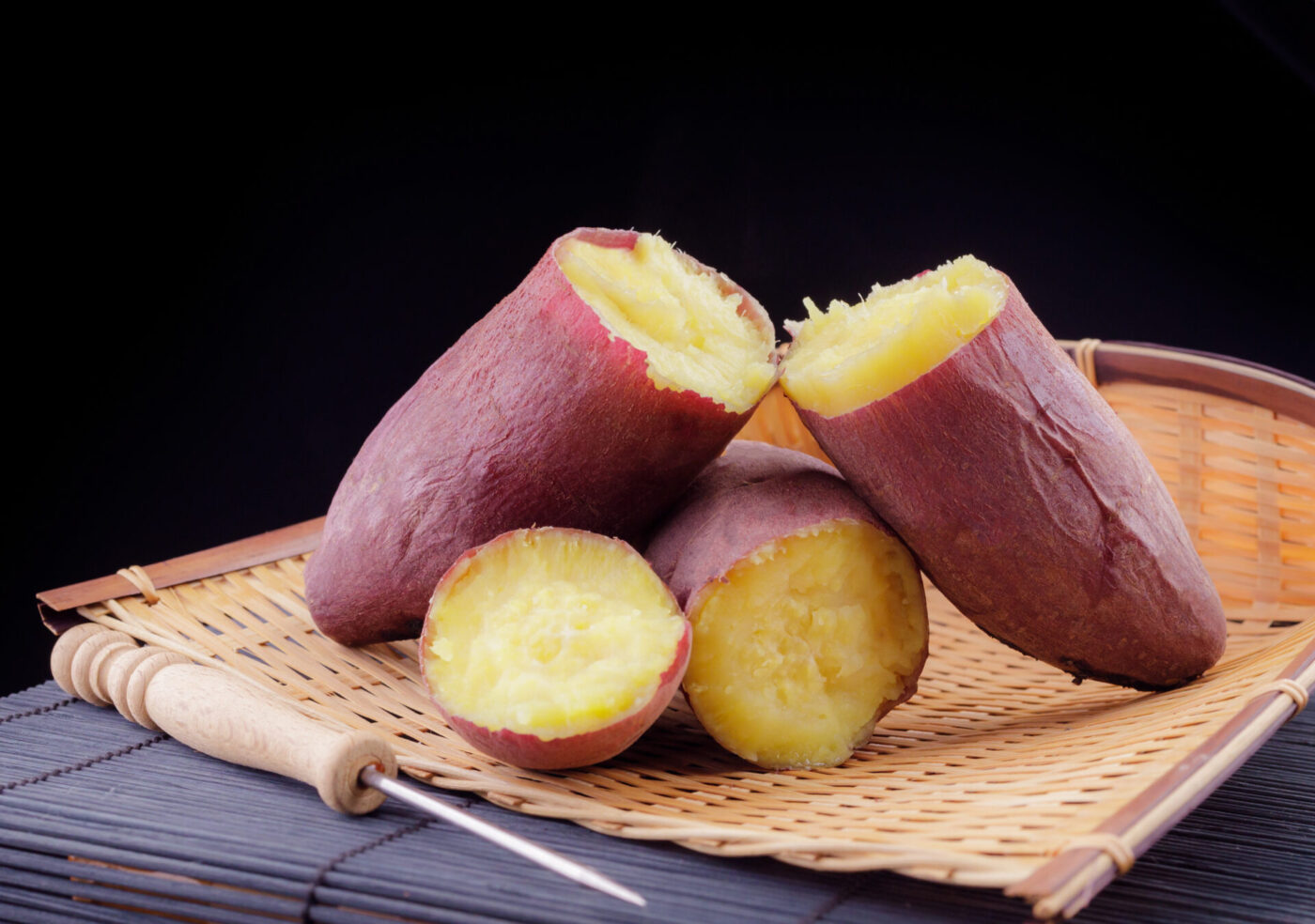Read More: Nutritional Information on Japanese Sweet Potatoes Satsumaimo
Japanese Sweet Potatoes (Satsumaimo): Unveiling the Nutritional Treasures Within
Japanese sweet potatoes, often called Satsumaimo in Japanese, are a distinct variety of sweet potato (Ipomoea batatas) cherished for their dense, starchy texture, naturally sweet flavor, and rich nutritional profile. While sharing some similarities with other sweet potatoes, the Japanese variety boasts unique characteristics that set it apart, both in the kitchen and in terms of its health benefits. This article will explore the nutritional composition of Japanese sweet potatoes, highlighting what makes them a valuable addition to a balanced diet.
Distinguishing Features of Japanese Sweet Potatoes
Before delving into the nutritional specifics, let’s identify the key characteristics that differentiate Japanese sweet potatoes from other varieties:
- Appearance: They typically have reddish-purple skin and a creamy white to pale yellow flesh that turns a deeper golden yellow when cooked.
- Texture: They are denser and starchier than many other sweet potato varieties, like the orange-fleshed Jewel. This gives them a more substantial, almost chestnut-like texture when cooked.
- Flavor: They are notably sweet, with a distinct, slightly nutty, and sometimes described as chestnut-like flavor. This sweetness is naturally occurring and doesn’t require the addition of much, if any, extra sugar.
Nutritional Breakdown: A Closer Look
Japanese sweet potatoes are a nutritional powerhouse, offering a rich array of vitamins, minerals, fiber, and antioxidants. Here’s a detailed look at their nutritional profile per 100g serving (cooked, without skin):
- Calories: Approximately 110-120 (slightly higher than some other sweet potato varieties due to their higher starch content)
- Carbohydrates: 24-26g (primarily complex carbohydrates, with a significant portion being starch)
- Fiber: 3-4g (a good source of dietary fiber, promoting digestive health, blood sugar control, and satiety)
- Sugars: 5-6g (naturally occurring sugars, contributing to their sweet flavor)
- Protein: 1.5-2g
- Fat: Less than 0.5g (very low in fat)
Key Vitamins and Minerals
- Vitamin A (as Beta-Carotene): While not as dramatically high in beta-carotene as orange-fleshed sweet potatoes like the Jewel, Japanese sweet potatoes still contain a respectable amount. The yellow color of the cooked flesh indicates the presence of carotenoids, which the body can convert to Vitamin A.
- Vitamin C: A good source of Vitamin C, providing around 20-30% of the recommended daily intake (RDI). Vitamin C is a powerful antioxidant and essential for immune function, collagen production, and wound healing.
- Manganese: A good source, providing around 20-25% of the RDI. Manganese is important for bone health, metabolism, and antioxidant defense.
- Potassium: A good source, providing around 10-15% of the RDI. Potassium is crucial for blood pressure regulation, fluid balance, and muscle function.
- Vitamin B6 (Pyridoxine): A good source, providing around 10-15% of the RDI. Vitamin B6 is involved in energy metabolism, brain development, and red blood cell formation.
- Copper: contributes to iron absorption and energy production.
- Pantothenic Acid: Part of the vitamin B family that helps with energy metabolism.
The Antioxidant Advantage: Beyond Beta-Carotene
Japanese sweet potatoes offer a compelling antioxidant profile that goes beyond just beta-carotene:
- Anthocyanins: The reddish-purple skin of Japanese sweet potatoes contains anthocyanins, powerful antioxidants that give the skin its vibrant color. If you eat the skin (after thorough washing), you’ll reap the benefits of these compounds. Anthocyanins are associated with:
- Reduced Inflammation: They help combat inflammation throughout the body.
- Improved Cardiovascular Health: They may help protect against heart disease.
- Potential Anti-Cancer Properties: Some studies suggest anthocyanins may have anti-cancer effects.
- Brain Health: They may help protect brain cells from damage.
- Other Polyphenols: Japanese sweet potatoes also contain other polyphenol compounds that contribute to their overall antioxidant capacity.
Resistant Starch: A Gut Health Booster
The higher starch content of Japanese sweet potatoes, particularly when cooked and then cooled, contributes to a significant amount of resistant starch. Resistant starch is a type of carbohydrate that “resists” digestion in the small intestine and instead travels to the large intestine, where it acts as a prebiotic.
- Prebiotic Benefits: Prebiotics are essentially food for the beneficial bacteria in your gut (your gut microbiome). These bacteria ferment the resistant starch, producing short-chain fatty acids (SCFAs) like butyrate. SCFAs have numerous health benefits, including:
- Improved Gut Health: They nourish the gut lining, reduce inflammation, and promote a healthy gut microbiome.
- Blood Sugar Control: They can help improve insulin sensitivity and regulate blood sugar levels.
- Increased Satiety: They can promote feelings of fullness, which may aid in weight management.
- Potential Colon Cancer Protection: Some studies suggest SCFAs may help protect against colon cancer.
To maximize the resistant starch content, cook the Japanese sweet potatoes and then allow them to cool completely in the refrigerator before eating. Reheating them after cooling will still retain a good portion of the resistant starch.
Glycemic Index (GI)
Despite their sweetness, Japanese sweet potatoes generally have a moderate glycemic index (GI), especially when compared to white potatoes or refined grains. The fiber content and the presence of resistant starch help to slow down the absorption of glucose into the bloodstream, preventing rapid spikes in blood sugar. This makes them a suitable choice for people with diabetes or those managing their blood sugar levels.
Japanese sweet potatoes, or Satsumaimo, are a nutritional and culinary gem. Their unique combination of vitamins, minerals, fiber, antioxidants, and resistant starch makes them a valuable addition to a healthy diet. Their dense texture, sweet flavor, and versatility in the kitchen make them a delicious and satisfying food to enjoy in various ways. Whether you roast them, bake them, steam them, or add them to your favorite dishes, Japanese sweet potatoes offer a compelling blend of flavor and nutrition.



Share
Click on the icons below to share "Title of the item to share"